About Mozart's Operas - Cosi Fan Tutte, Don Giovanni, The Magic Flute, et al...
A look at the most famous and beautiful Mozart Operas...
Mozart composed 22 operas over his 35 years. His knack for picking up and quickly mastering any music style meant that creating operas was easy for him. The music in the Mozart operas is deceptively simple, but underneath that lies a strong current of innovation.
Mozart didn't just write operas - he enhanced the genre as a whole. His new techniques brought operas at the time to new levels of musical sophistication and emotional depth, letting the music express the drama.
But music wasn't the only way he improved opera. The excellent plots and realistic, human characters of his works were very novel for the time. In fact, he searched for a good long while before he found a librettist (Lorenzo da Ponte) who was good enough to write for the composer's music.
The Mozart operas haven't left the performance repertory since the era he wrote them. Amazing - over two hundreds of unbroken performances!
He wrote in different styles of opera, depending on the era of his life. In his later operas he deftly combines two or more styles, proving again that he was one of the greatest operatic innovators.
The different types of opera he wrote are...
- Opera Buffa: an Italian comic opera.
- Opera Seria: a "serious" style of opera, involving heavy themes
- Singspiel: a German type of opera which has both talking and singing.
Here are the most famous and well-loved Mozart operas...
Idomeneo (1781)
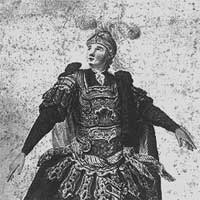
Considered the first of Mozart's great (i.e. mature) operas.
The Elector of Bavaria asked Mozart and librettist Giambattista Varesco to write an opera for a court carnaval in 1781. They agreed and created Idomeneo.
The style is Opera Seria, and is actually quite similar to French opera of the day.
Based on a legend from the Ancient Greeks, the opera is set on Crete and involves Greeks, Trojans, gods and priests.
The Abduction from the Seraglio (1782)
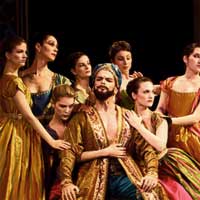
This is a Singspiel (both spoken words and singing).
The story involves the hero rescuring his lover from a Turkish palace. It's a light-hearted opera, with a strong dash of humor.
Since the opera involves Turkish elements, Mozart composed some fitting Turkish-sounding music for it. Turkish art was very popular in Europe then, and this coupled with the fun plot made the opera a smash hit. Mozart earned quite a decent bit of money from performances of this opera.
Some of the arias are astonishingly difficult, filled with complex runs and fast passages. When the Emperor Joseph II heard the opera he complained to Mozart "there are too many notes!". But Mozart replied calmly "There are just as many notes as there should be".
Le nozze di Figaro (1786)
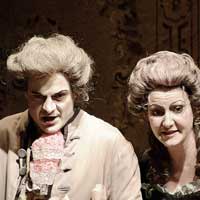
Meaning "The Marriage of Figaro", this opera had an average reception in Vienna when it first premiered in 1786. Then Mozart took it to Prague... where it was super-successful and highly appreciated.
It's an opera buffa in style, with a libretto by Lorenzo da Ponte. The play it was based on was actually banned in Vienna at first, because it poked fun at the nobility.
The entire plot spans a single day. The setting is the palace of a Count in Sevilla (Spain).
Don Giovanni (1797)
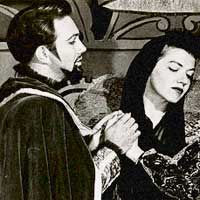
Mozart's second collaboration with Lorenzo da Ponte. Because Le nozze di Figaro was so popular in Prague, Mozart was asked to compose another opera for the audiences there the following year. And so Don Giovanni was born.
This is my personal favorite of the Mozart operas. Franz Liszt wrote a wonderful fantasia for solo piano on themes from this opera. The opera itself is one of Mozart's best and most popular, still performed frequently today.
Click to explore the life and works of Franz Liszt, who was hugely inspired by Mozart
Mozart managed to blend opera buffa and opera seria in Don Giovanni, with some characters belonging to one style and some to another.
The premiere in Prague was a bit of a mess. Mozart hadn't finished it in time, so had to quickly scribble out the last passages right before the performance time!
Mozart knew all the singers for the lead roles. He designed their individual characters' vocal parts to fit their voices perfectly. He also conducted the premiere himself - what an event that must have been!
The story is set in Spain, and is based on the Don Juan legend. Don Giovanni is a ladies man, but in an accident he kills the important father of one of his mistresses. He runs away, but the father returns as a terrifying statue and takes Don Giovanni to hell.
Cosi fan tutte (1790)
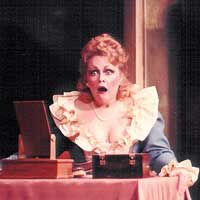
The title translates to "Women are all like that", although this isn't an exact translation. It was Mozart's third and final collaboration with Lorenzo da Ponte.
The story is somewhat risque, although during the first couple of years nobody cared. It wasn't until a bit later that opera houses began altering the plot.
The plot is quite immature really, but good fun nonetheless. It's about two young women who each have a lover. The lovers make a bet that their women will be unfaithful, so they disguise themselves and swap women.
The trick works, and eventually the two "new" couples have a double wedding... but before the end everything comes out. The women return to their original lovers and there's a happy ending.
The Magic Flute (1791)
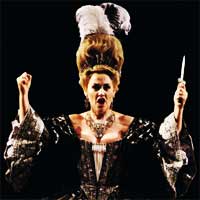
This enchanting fairytale (Die Zaubeflote in German) was the last of the Mozart operas to be performed (the second last to be written). It has strong Masonic elements (Mozart was an active freemason), and was also influenced by the philosophy of the Enlightenment.
The librettist Schikaneder already had a plot, words, and actors written for his Singspiel opera. All he needed was music - and he asked Mozart.
With his usual speed the composer wrote all the music, then conducted the premiere towards the end of 1791 (two months before his death). The Magic Flute was immensely popular.
Mozart had been depressed before, and the huge positive reception to his latest opera brightened his mood.
The opera is known for its fantastical elements, and the insanely demanding aria for the Queen of the Night.
Click to explore the music and plot of The Magic Flute, and listen to its famous arias
All the Mozart Operas
- Obligation of the first and foremost Commandment K.35 (1767)
- Apollo and Hyacinth K.38 (1767)
- Bastien and Bastienne K.50 (1768)
- The Feigned Simpleton K.51 (1768)
- Mithridates, King of Pontus K.87 (1770)
- Ascanius in Alba K.111 (1771)
- Scipio's Dream K.126 (1772)
- Lucio Silla K.135 (1772)
- La finta giardiniera K.196 (1774)
- The Shepherd King K.208 (1775)
- Thamos, King of Egypt K.345 (1773/1779)
- Zaide K.344 (1779)
- Idomeneo, King of Crete K.366 (1781)
- The Abduction from the Seraglio K.384 (1782)
- The Goose of Cairo K.422 (1784)
- The Deluded Bridegroom K.430 (1784)
- The Impresario K.486 (1786)
- The Marriage of Figaro K.492 (1786)
- Don Giovanni K.527 (1787)
- Cosi fan tutte K.588 (1790)
- The Clemency of Titus K.621 (1791)
- The Magic Flute K.620 (1791)
You may also be interested in Mozart's Symphonies or the famed Mozart clarinet concerto.
If you like my site, please click "Like"... thanks!


